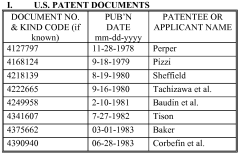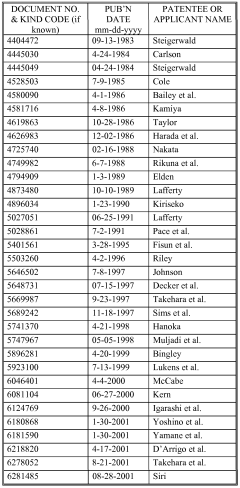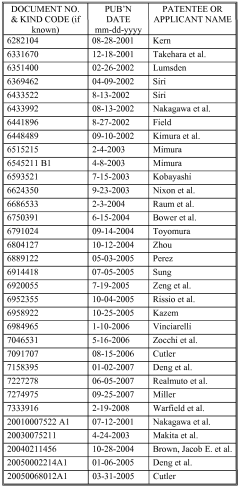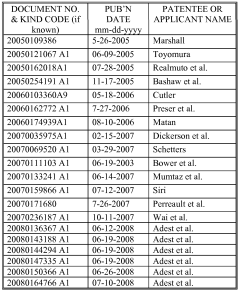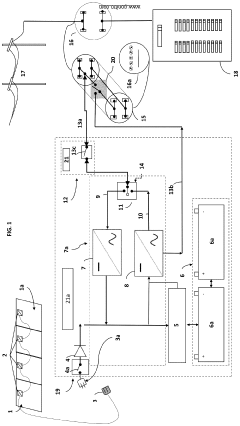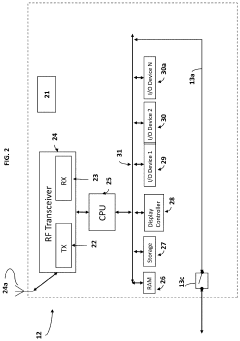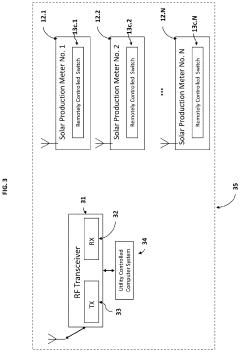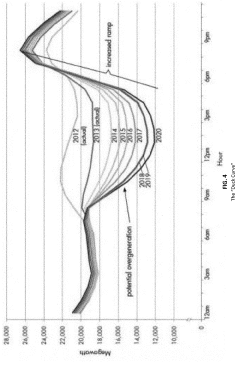Assessing Long-Term Benefits of Solar Inverters
JUL 17, 202510 MIN READ
Generate Your Research Report Instantly with AI Agent
Patsnap Eureka helps you evaluate technical feasibility & market potential.
Solar Inverter Evolution
Solar inverter technology has undergone significant evolution since its inception, driven by the rapid growth of the solar energy industry and the increasing demand for more efficient and reliable power conversion systems. The journey of solar inverters can be traced through several key developmental stages, each marked by technological advancements and improved performance characteristics.
In the early days of solar energy, basic central inverters dominated the market. These large, centralized units were designed to handle the output of entire solar arrays, converting DC power from multiple panels into AC power for grid connection. While effective for their time, these early inverters had limitations in terms of efficiency and flexibility.
The next significant milestone came with the introduction of string inverters. This innovation allowed for more modular system designs, with multiple strings of solar panels connected to separate inverters. String inverters offered improved performance and easier maintenance compared to their central counterparts, marking a shift towards more distributed power conversion architectures.
As solar technology continued to advance, microinverters emerged as a game-changing solution. These small, panel-level inverters revolutionized solar system design by allowing each panel to operate independently. Microinverters significantly enhanced system efficiency, especially in partial shading conditions, and provided more granular monitoring capabilities.
The evolution of solar inverters has also been characterized by continuous improvements in power density, efficiency, and reliability. Modern inverters boast conversion efficiencies exceeding 98%, a remarkable improvement from earlier generations. This progress has been driven by advancements in semiconductor technology, particularly the adoption of wide-bandgap materials like silicon carbide (SiC) and gallium nitride (GaN).
Another key development in solar inverter technology has been the integration of smart features and connectivity. Today's inverters are not just power conversion devices but intelligent system components capable of data collection, performance optimization, and remote monitoring. This evolution has played a crucial role in enhancing overall system performance and facilitating better grid integration of solar energy.
The most recent phase in solar inverter evolution focuses on grid support functions and energy storage integration. Modern inverters are designed to provide ancillary services to the grid, such as voltage and frequency regulation, reactive power control, and low voltage ride-through capabilities. Additionally, the integration of battery storage systems with solar inverters has opened new possibilities for energy management and grid stability.
Looking ahead, the evolution of solar inverters is expected to continue, with trends pointing towards even higher efficiencies, increased power densities, and more advanced grid support capabilities. The integration of artificial intelligence and machine learning algorithms is likely to further enhance inverter performance and predictive maintenance capabilities, contributing to the long-term reliability and efficiency of solar energy systems.
In the early days of solar energy, basic central inverters dominated the market. These large, centralized units were designed to handle the output of entire solar arrays, converting DC power from multiple panels into AC power for grid connection. While effective for their time, these early inverters had limitations in terms of efficiency and flexibility.
The next significant milestone came with the introduction of string inverters. This innovation allowed for more modular system designs, with multiple strings of solar panels connected to separate inverters. String inverters offered improved performance and easier maintenance compared to their central counterparts, marking a shift towards more distributed power conversion architectures.
As solar technology continued to advance, microinverters emerged as a game-changing solution. These small, panel-level inverters revolutionized solar system design by allowing each panel to operate independently. Microinverters significantly enhanced system efficiency, especially in partial shading conditions, and provided more granular monitoring capabilities.
The evolution of solar inverters has also been characterized by continuous improvements in power density, efficiency, and reliability. Modern inverters boast conversion efficiencies exceeding 98%, a remarkable improvement from earlier generations. This progress has been driven by advancements in semiconductor technology, particularly the adoption of wide-bandgap materials like silicon carbide (SiC) and gallium nitride (GaN).
Another key development in solar inverter technology has been the integration of smart features and connectivity. Today's inverters are not just power conversion devices but intelligent system components capable of data collection, performance optimization, and remote monitoring. This evolution has played a crucial role in enhancing overall system performance and facilitating better grid integration of solar energy.
The most recent phase in solar inverter evolution focuses on grid support functions and energy storage integration. Modern inverters are designed to provide ancillary services to the grid, such as voltage and frequency regulation, reactive power control, and low voltage ride-through capabilities. Additionally, the integration of battery storage systems with solar inverters has opened new possibilities for energy management and grid stability.
Looking ahead, the evolution of solar inverters is expected to continue, with trends pointing towards even higher efficiencies, increased power densities, and more advanced grid support capabilities. The integration of artificial intelligence and machine learning algorithms is likely to further enhance inverter performance and predictive maintenance capabilities, contributing to the long-term reliability and efficiency of solar energy systems.
Market Demand Analysis
The market demand for solar inverters has been experiencing significant growth, driven by the increasing adoption of solar energy systems worldwide. As governments and organizations push for cleaner energy sources to combat climate change, the solar industry has seen a substantial boost in investments and installations. This trend has directly impacted the demand for solar inverters, which are crucial components in converting the direct current (DC) generated by solar panels into alternating current (AC) for use in homes, businesses, and the power grid.
The residential sector has been a key driver of solar inverter demand, with homeowners increasingly recognizing the long-term economic benefits of solar energy systems. The ability to reduce electricity bills and potentially sell excess power back to the grid has made solar installations an attractive option for many households. This has led to a steady increase in the residential solar market, particularly in regions with high electricity costs or favorable solar incentives.
Commercial and industrial sectors have also contributed significantly to the growing demand for solar inverters. Large-scale solar installations on commercial buildings, factories, and warehouses have become more common as businesses seek to reduce their carbon footprint and energy costs. The scalability of solar systems, coupled with the improving efficiency of solar inverters, has made them an increasingly viable option for businesses of all sizes.
Utility-scale solar projects have emerged as another major market segment for solar inverters. As the cost of solar technology continues to decrease and grid parity is achieved in more regions, utility companies are investing heavily in large solar farms. These projects require high-capacity inverters capable of handling massive power outputs, driving demand for more advanced and robust inverter technologies.
The market for solar inverters is also being shaped by technological advancements and evolving grid requirements. Smart inverters, which offer features such as remote monitoring, power optimization, and grid support functions, are gaining traction. These advanced inverters not only improve system performance but also help integrate solar energy more seamlessly into existing power grids, addressing concerns about grid stability and reliability.
Geographically, the demand for solar inverters varies across regions, with some markets showing more rapid growth than others. Developing countries with expanding energy needs and abundant solar resources are emerging as significant markets for solar inverters. Meanwhile, established markets in Europe and North America continue to drive demand through replacement of older systems and new installations.
The long-term benefits of solar inverters, including their role in reducing greenhouse gas emissions, enhancing energy independence, and providing economic savings, are expected to sustain market growth in the coming years. As solar technology continues to improve and costs decrease further, the market for solar inverters is projected to expand, with new applications and innovations likely to emerge, further driving demand in this dynamic sector.
The residential sector has been a key driver of solar inverter demand, with homeowners increasingly recognizing the long-term economic benefits of solar energy systems. The ability to reduce electricity bills and potentially sell excess power back to the grid has made solar installations an attractive option for many households. This has led to a steady increase in the residential solar market, particularly in regions with high electricity costs or favorable solar incentives.
Commercial and industrial sectors have also contributed significantly to the growing demand for solar inverters. Large-scale solar installations on commercial buildings, factories, and warehouses have become more common as businesses seek to reduce their carbon footprint and energy costs. The scalability of solar systems, coupled with the improving efficiency of solar inverters, has made them an increasingly viable option for businesses of all sizes.
Utility-scale solar projects have emerged as another major market segment for solar inverters. As the cost of solar technology continues to decrease and grid parity is achieved in more regions, utility companies are investing heavily in large solar farms. These projects require high-capacity inverters capable of handling massive power outputs, driving demand for more advanced and robust inverter technologies.
The market for solar inverters is also being shaped by technological advancements and evolving grid requirements. Smart inverters, which offer features such as remote monitoring, power optimization, and grid support functions, are gaining traction. These advanced inverters not only improve system performance but also help integrate solar energy more seamlessly into existing power grids, addressing concerns about grid stability and reliability.
Geographically, the demand for solar inverters varies across regions, with some markets showing more rapid growth than others. Developing countries with expanding energy needs and abundant solar resources are emerging as significant markets for solar inverters. Meanwhile, established markets in Europe and North America continue to drive demand through replacement of older systems and new installations.
The long-term benefits of solar inverters, including their role in reducing greenhouse gas emissions, enhancing energy independence, and providing economic savings, are expected to sustain market growth in the coming years. As solar technology continues to improve and costs decrease further, the market for solar inverters is projected to expand, with new applications and innovations likely to emerge, further driving demand in this dynamic sector.
Technical Challenges
Solar inverter technology has made significant strides in recent years, but several technical challenges persist in the quest to maximize long-term benefits. One of the primary hurdles is the optimization of power conversion efficiency. While current inverters boast impressive efficiency ratings, there is still room for improvement, particularly in reducing energy losses during the DC to AC conversion process. This challenge is compounded by the need to maintain high efficiency across a wide range of input voltages and power levels, as solar panel output can vary significantly due to environmental factors.
Reliability and longevity pose another significant challenge. Solar inverters are exposed to harsh outdoor conditions and must operate continuously for extended periods. Developing inverters that can withstand temperature extremes, humidity, and other environmental stressors while maintaining consistent performance over a 20-25 year lifespan is a complex engineering task. This challenge is closely tied to the need for advanced thermal management systems and robust component selection.
The integration of smart grid functionalities presents a multifaceted challenge for inverter manufacturers. As power grids become more dynamic and decentralized, inverters must evolve to support bidirectional power flow, voltage regulation, and reactive power control. Implementing these features while ensuring grid stability and compliance with evolving regulatory standards requires sophisticated control algorithms and communication protocols.
Energy storage integration is another area of technical complexity. As the demand for solar-plus-storage systems grows, inverters must seamlessly interface with battery systems, managing charging and discharging cycles while optimizing overall system performance. This integration necessitates advanced power electronics and control strategies to handle multiple power sources and loads efficiently.
The challenge of harmonics and power quality cannot be overlooked. As the penetration of solar power increases, the cumulative effect of multiple inverters on grid power quality becomes more pronounced. Developing inverters that minimize harmonic distortion and comply with stringent grid codes is crucial for maintaining overall system stability and efficiency.
Cybersecurity presents an emerging challenge in the realm of solar inverters. As these devices become more connected and integral to smart grid operations, they also become potential targets for cyber attacks. Ensuring robust security measures without compromising performance or increasing costs significantly is a delicate balance that manufacturers must strike.
Lastly, the push for higher power density and reduced costs presents ongoing engineering challenges. Miniaturization of components, innovative cooling solutions, and the use of advanced materials are areas of active research aimed at producing more compact, efficient, and cost-effective inverters. This pursuit must be balanced with the need for reliability and long-term performance, making it a complex optimization problem for researchers and engineers in the field.
Reliability and longevity pose another significant challenge. Solar inverters are exposed to harsh outdoor conditions and must operate continuously for extended periods. Developing inverters that can withstand temperature extremes, humidity, and other environmental stressors while maintaining consistent performance over a 20-25 year lifespan is a complex engineering task. This challenge is closely tied to the need for advanced thermal management systems and robust component selection.
The integration of smart grid functionalities presents a multifaceted challenge for inverter manufacturers. As power grids become more dynamic and decentralized, inverters must evolve to support bidirectional power flow, voltage regulation, and reactive power control. Implementing these features while ensuring grid stability and compliance with evolving regulatory standards requires sophisticated control algorithms and communication protocols.
Energy storage integration is another area of technical complexity. As the demand for solar-plus-storage systems grows, inverters must seamlessly interface with battery systems, managing charging and discharging cycles while optimizing overall system performance. This integration necessitates advanced power electronics and control strategies to handle multiple power sources and loads efficiently.
The challenge of harmonics and power quality cannot be overlooked. As the penetration of solar power increases, the cumulative effect of multiple inverters on grid power quality becomes more pronounced. Developing inverters that minimize harmonic distortion and comply with stringent grid codes is crucial for maintaining overall system stability and efficiency.
Cybersecurity presents an emerging challenge in the realm of solar inverters. As these devices become more connected and integral to smart grid operations, they also become potential targets for cyber attacks. Ensuring robust security measures without compromising performance or increasing costs significantly is a delicate balance that manufacturers must strike.
Lastly, the push for higher power density and reduced costs presents ongoing engineering challenges. Miniaturization of components, innovative cooling solutions, and the use of advanced materials are areas of active research aimed at producing more compact, efficient, and cost-effective inverters. This pursuit must be balanced with the need for reliability and long-term performance, making it a complex optimization problem for researchers and engineers in the field.
Current Inverter Solutions
01 Energy efficiency and cost savings
Solar inverters contribute to long-term energy efficiency and cost savings by converting DC power from solar panels to AC power for home use. They optimize power output, reduce electricity bills, and provide a return on investment over time.- Energy efficiency and cost savings: Solar inverters contribute to long-term energy efficiency and cost savings by converting DC power from solar panels to AC power for home use. They optimize power output, reduce electricity bills, and provide a return on investment over time.
- Grid integration and stability: Advanced solar inverters offer improved grid integration capabilities, enhancing power quality and grid stability. They can provide reactive power support, voltage regulation, and frequency control, contributing to a more reliable and resilient electrical grid.
- Monitoring and data analytics: Modern solar inverters incorporate sophisticated monitoring and data analytics features. These capabilities allow for real-time performance tracking, predictive maintenance, and optimization of solar energy systems, leading to improved long-term efficiency and reliability.
- Environmental benefits and sustainability: Solar inverters play a crucial role in reducing carbon emissions and promoting sustainable energy production. By enabling the efficient use of solar power, they contribute to long-term environmental benefits and support the transition to clean energy sources.
- Smart home integration and energy management: Advanced solar inverters can integrate with smart home systems, allowing for intelligent energy management. This integration enables features such as load shifting, energy storage coordination, and optimized self-consumption, providing long-term benefits in terms of energy independence and efficiency.
02 Grid integration and stability
Advanced solar inverters offer improved grid integration capabilities, enhancing power quality and grid stability. They can provide reactive power support, voltage regulation, and frequency control, contributing to a more reliable and resilient electrical grid.Expand Specific Solutions03 Monitoring and performance optimization
Modern solar inverters include sophisticated monitoring systems that allow for real-time performance tracking, fault detection, and remote diagnostics. This enables proactive maintenance, optimizes system performance, and extends the lifespan of the solar installation.Expand Specific Solutions04 Environmental benefits and sustainability
Solar inverters play a crucial role in reducing carbon emissions and promoting sustainable energy production. By enabling efficient solar power generation, they contribute to long-term environmental benefits and support the transition to clean energy sources.Expand Specific Solutions05 Smart home integration and energy management
Advanced solar inverters can integrate with smart home systems, allowing for intelligent energy management. This integration enables features such as load shifting, energy storage coordination, and optimized self-consumption, leading to increased energy independence and efficiency.Expand Specific Solutions
Key Industry Players
The solar inverter market is in a growth phase, driven by increasing adoption of solar energy globally. The market size is expanding rapidly, with projections indicating significant growth in the coming years. Technologically, solar inverters are evolving towards higher efficiency, smart grid integration, and enhanced monitoring capabilities. Key players like Enphase Energy, SMA Solar Technology, and SolarEdge Technologies are leading innovation, focusing on microinverters and power optimizers. Emerging companies such as Tesla and FTC Solar are also making strides in this competitive landscape. The technology is maturing, with a focus on reliability, performance, and cost-effectiveness, as the industry moves towards grid parity and increased renewable energy adoption.
Enphase Energy, Inc.
Technical Solution: Enphase Energy has developed microinverter technology that converts DC power from individual solar panels to AC power. Their IQ8 microinverters can form a microgrid during power outages, providing backup power without batteries[1]. The company's Ensemble energy management system integrates solar, storage, and load control for optimized energy use[2]. Enphase's microinverters have a 25-year warranty, demonstrating long-term reliability[3]. They also offer remote monitoring and software updates to maintain performance over time.
Strengths: Individual panel optimization, high reliability, and flexible system design. Weaknesses: Higher initial cost compared to string inverters, and potential for more points of failure due to multiple components.
SMA Solar Technology AG
Technical Solution: SMA Solar Technology focuses on central and string inverters for large-scale solar installations. Their Sunny Central UP inverter can reach up to 4.6 MW in power output, suitable for utility-scale projects[4]. SMA's inverters incorporate advanced grid management functions and can provide reactive power support even at night[5]. The company's ennexOS energy management platform allows for the integration of various energy sources and optimizes system performance[6]. SMA inverters are designed for outdoor installation and can operate in harsh environmental conditions, ensuring long-term reliability.
Strengths: High power capacity, advanced grid support features, and robust design for outdoor use. Weaknesses: Less flexibility for small-scale installations and potentially higher maintenance costs for centralized systems.
Core Inverter Innovations
High reliability power systems and solar power converters
PatentWO2009055474A1
Innovation
- The use of switchmode power conversion technology with film capacitors that emulate high capacitance, allowing for energy storage over a large voltage range, thereby extending the lifespan of components like grid-tied PV converters to several decades.
Renewable Energy Metering System
PatentActiveUS20210098994A1
Innovation
- A utility-owned battery and inverter system connected to a customer's solar array, allowing for bi-directional energy flow and independent metering, enabling utilities to manage and utilize solar energy without affecting customer consumption meters, and providing backup power during outages.
Grid Integration Impact
The integration of solar inverters into the electrical grid has profound implications for the overall power system's stability, efficiency, and resilience. As the penetration of solar energy increases, the impact of inverters on grid operations becomes more significant. Solar inverters play a crucial role in converting DC power from photovoltaic panels into AC power compatible with the grid, but their influence extends far beyond this basic function.
One of the primary benefits of advanced solar inverters is their ability to provide grid support services. These inverters can help regulate voltage and frequency, contributing to grid stability. By dynamically adjusting their output based on grid conditions, they can help mitigate voltage fluctuations and maintain power quality. This capability is particularly valuable in areas with high solar penetration, where sudden changes in solar output could otherwise lead to grid instability.
Furthermore, smart inverters equipped with advanced communication capabilities can enhance grid visibility and control. They can provide real-time data on power production, voltage levels, and other critical parameters to grid operators. This increased visibility allows for more efficient grid management and can help prevent or quickly resolve potential issues.
The integration of solar inverters also facilitates the implementation of demand response programs. By enabling two-way communication between the grid and distributed energy resources, these inverters allow for more flexible and responsive power management. This can lead to improved load balancing and reduced strain on the grid during peak demand periods.
Another significant impact of solar inverter integration is the potential for islanding capabilities. Advanced inverters can enable sections of the grid to operate independently during power outages, enhancing overall system resilience. This feature is particularly valuable for critical infrastructure and can help maintain power supply during emergencies.
However, the widespread integration of solar inverters also presents challenges. The high penetration of inverter-based resources can lead to reduced system inertia, which traditionally helps stabilize the grid during disturbances. To address this, inverters are being developed with grid-forming capabilities, allowing them to provide synthetic inertia and support grid stability even in the absence of conventional generators.
In conclusion, the integration of solar inverters has far-reaching effects on grid operations. While it presents some challenges, the long-term benefits in terms of grid stability, flexibility, and resilience are substantial. As technology continues to advance, the role of solar inverters in shaping a more robust and sustainable power system is likely to grow even further.
One of the primary benefits of advanced solar inverters is their ability to provide grid support services. These inverters can help regulate voltage and frequency, contributing to grid stability. By dynamically adjusting their output based on grid conditions, they can help mitigate voltage fluctuations and maintain power quality. This capability is particularly valuable in areas with high solar penetration, where sudden changes in solar output could otherwise lead to grid instability.
Furthermore, smart inverters equipped with advanced communication capabilities can enhance grid visibility and control. They can provide real-time data on power production, voltage levels, and other critical parameters to grid operators. This increased visibility allows for more efficient grid management and can help prevent or quickly resolve potential issues.
The integration of solar inverters also facilitates the implementation of demand response programs. By enabling two-way communication between the grid and distributed energy resources, these inverters allow for more flexible and responsive power management. This can lead to improved load balancing and reduced strain on the grid during peak demand periods.
Another significant impact of solar inverter integration is the potential for islanding capabilities. Advanced inverters can enable sections of the grid to operate independently during power outages, enhancing overall system resilience. This feature is particularly valuable for critical infrastructure and can help maintain power supply during emergencies.
However, the widespread integration of solar inverters also presents challenges. The high penetration of inverter-based resources can lead to reduced system inertia, which traditionally helps stabilize the grid during disturbances. To address this, inverters are being developed with grid-forming capabilities, allowing them to provide synthetic inertia and support grid stability even in the absence of conventional generators.
In conclusion, the integration of solar inverters has far-reaching effects on grid operations. While it presents some challenges, the long-term benefits in terms of grid stability, flexibility, and resilience are substantial. As technology continues to advance, the role of solar inverters in shaping a more robust and sustainable power system is likely to grow even further.
Lifecycle Cost Analysis
Lifecycle cost analysis is a crucial aspect of assessing the long-term benefits of solar inverters. This comprehensive approach considers all costs associated with the inverter throughout its entire lifespan, from initial purchase and installation to ongoing maintenance and eventual replacement.
The initial investment in a solar inverter typically accounts for a significant portion of the overall system cost. However, it is essential to look beyond this upfront expense to understand the true value proposition. High-quality inverters often command a premium price but may offer superior efficiency and reliability, translating into increased energy production and reduced maintenance costs over time.
Maintenance costs play a vital role in the lifecycle analysis of solar inverters. While some inverters may require minimal upkeep, others might necessitate regular servicing or component replacements. These ongoing expenses can significantly impact the total cost of ownership. Additionally, the frequency and nature of maintenance activities can affect system downtime, potentially reducing overall energy production and, consequently, financial returns.
Energy efficiency is a critical factor in the long-term cost-benefit analysis of solar inverters. More efficient inverters convert a higher percentage of DC power from solar panels into usable AC power, resulting in increased energy production over the system's lifetime. This enhanced efficiency can lead to higher energy savings or greater revenue from feed-in tariffs, depending on the specific installation scenario.
The expected lifespan of a solar inverter is another crucial consideration. While most inverters are designed to last 10-15 years, some premium models may offer extended warranties or longer operational lives. A longer-lasting inverter can significantly reduce the need for replacements, lowering the overall lifecycle cost and improving the return on investment.
Reliability and performance degradation over time also factor into the lifecycle cost analysis. Inverters that maintain consistent performance throughout their operational life will deliver more stable energy production and financial benefits. Conversely, those prone to efficiency losses or frequent failures may incur additional costs through reduced energy output and increased maintenance requirements.
When conducting a lifecycle cost analysis for solar inverters, it is essential to consider potential future scenarios. This includes anticipating changes in electricity prices, evolving grid requirements, and the possibility of integrating energy storage systems. Inverters with advanced features or upgrade capabilities may offer additional value by adapting to these future needs without requiring complete replacement.
In conclusion, a thorough lifecycle cost analysis provides a more accurate picture of the long-term benefits of solar inverters. By considering all aspects of cost and performance over the entire lifespan, stakeholders can make more informed decisions that optimize both financial returns and system reliability.
The initial investment in a solar inverter typically accounts for a significant portion of the overall system cost. However, it is essential to look beyond this upfront expense to understand the true value proposition. High-quality inverters often command a premium price but may offer superior efficiency and reliability, translating into increased energy production and reduced maintenance costs over time.
Maintenance costs play a vital role in the lifecycle analysis of solar inverters. While some inverters may require minimal upkeep, others might necessitate regular servicing or component replacements. These ongoing expenses can significantly impact the total cost of ownership. Additionally, the frequency and nature of maintenance activities can affect system downtime, potentially reducing overall energy production and, consequently, financial returns.
Energy efficiency is a critical factor in the long-term cost-benefit analysis of solar inverters. More efficient inverters convert a higher percentage of DC power from solar panels into usable AC power, resulting in increased energy production over the system's lifetime. This enhanced efficiency can lead to higher energy savings or greater revenue from feed-in tariffs, depending on the specific installation scenario.
The expected lifespan of a solar inverter is another crucial consideration. While most inverters are designed to last 10-15 years, some premium models may offer extended warranties or longer operational lives. A longer-lasting inverter can significantly reduce the need for replacements, lowering the overall lifecycle cost and improving the return on investment.
Reliability and performance degradation over time also factor into the lifecycle cost analysis. Inverters that maintain consistent performance throughout their operational life will deliver more stable energy production and financial benefits. Conversely, those prone to efficiency losses or frequent failures may incur additional costs through reduced energy output and increased maintenance requirements.
When conducting a lifecycle cost analysis for solar inverters, it is essential to consider potential future scenarios. This includes anticipating changes in electricity prices, evolving grid requirements, and the possibility of integrating energy storage systems. Inverters with advanced features or upgrade capabilities may offer additional value by adapting to these future needs without requiring complete replacement.
In conclusion, a thorough lifecycle cost analysis provides a more accurate picture of the long-term benefits of solar inverters. By considering all aspects of cost and performance over the entire lifespan, stakeholders can make more informed decisions that optimize both financial returns and system reliability.
Unlock deeper insights with Patsnap Eureka Quick Research — get a full tech report to explore trends and direct your research. Try now!
Generate Your Research Report Instantly with AI Agent
Supercharge your innovation with Patsnap Eureka AI Agent Platform!
